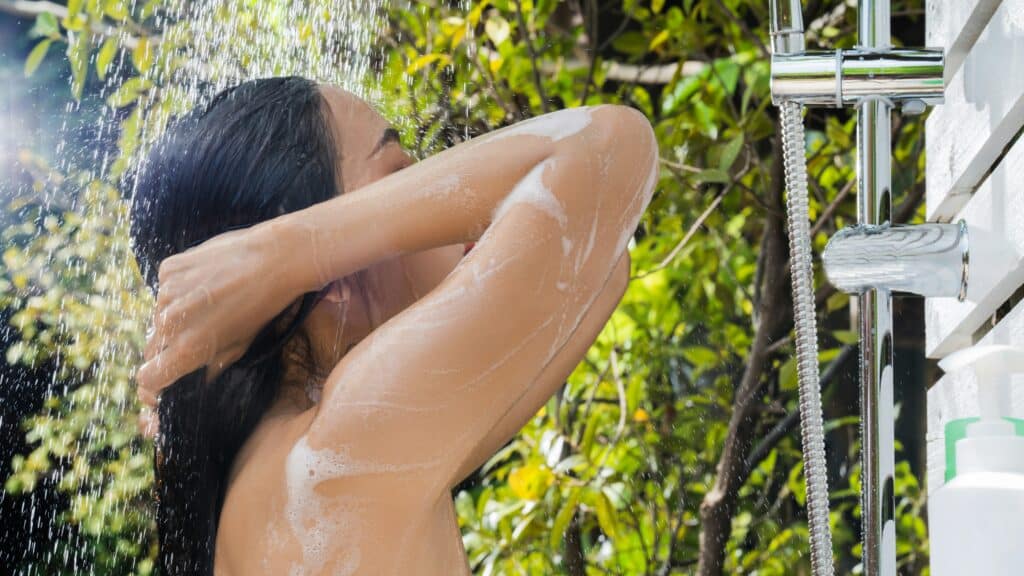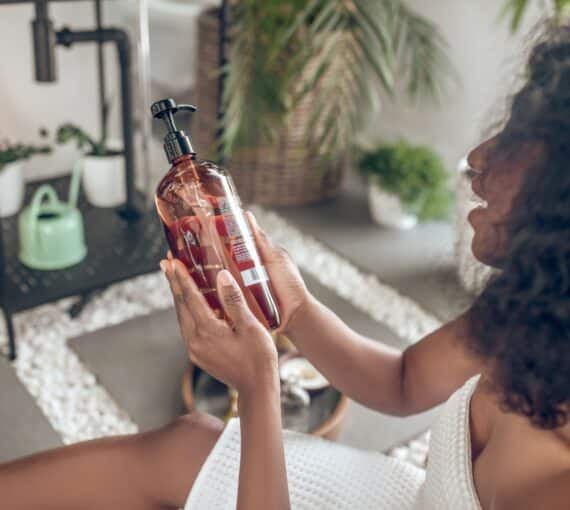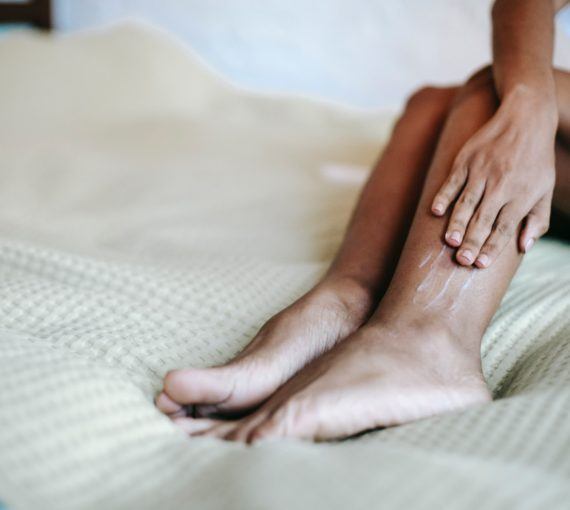
Get stunning hair with sustainable, Earth-friendly washing, styling and maintenance. You’ll protect your health and the environment!
Commercial hair care products often contain a cocktail of synthetic chemicals such as sulfates and parabens that can harm your health and the environment. Get stunning hair by adopting sustainable, Earth-friendly washing, styling and maintenance habits.
Washing
Your hair care choices can help prevent harmful chemicals from entering waterways, contaminating water sources and otherwise polluting the environment.
Read shampoo and conditioner ingredients and avoid:
- Sulfates. Used for their foaming abilities. Sulfates contribute to acidification of surface water and soil, damaging ecosystems and affecting aquatic flora and fauna.
- Parabens. Used as preservatives. They’ve been detected in surface water, fish and sediments and linked to ecological harm.
- Triclosan. Used as a preservative and anti-bacterial agent. Triclosan is a possible human carcinogen and known to cause hormonal disruption. When it enters the environment, it can harm algae and cause reproductive and developmental issues for fish and their eggs.
- Fragrance (a.k.a. parfum). Most brands use legal loopholes to avoid listing specific chemicals used in “fragrance.” Some could harm you and the environment.
Beware of greenwashing
A 2022 study showed 66 per cent of consumers will pay more for a product that aligns with their values. Brands and companies have caught on and many have launched “eco-friendly” product lines.
You’ve likely seen “natural,” “clean” and “organic” on hair care labels. But what do these keywords mean?
Natural: The product contains ingredients that are naturally available in the environment. The problem? The term “natural” is ambiguous and subjective. Many products still contain a combination of natural and synthetic ingredients. And ingredients found in nature can also be toxic — think of mercury and arsenic!
Clean: Typically suggests the product doesn’t contain ingredients considered harmful or potentially irritating (e.g., parabens or phthalates). The problem? There is no fixed definition, standardized criteria or regulatory oversight of what “clean” means in body care products.
Organic: The product ingredients were grown and processed without synthetic pesticides or fertilizers. The problem? Though the term “organic” is regulated depending on where the ingredients in the product were sourced and manufactured, many brands use the term without providing vetted certification.

Tip!
Deciphering hair care product ingredients can be challenging. Look for apps that scan product barcodes and show which ingredients may be harmful. Or use the Environmental Working Group consumer guides.
Zero waste shampoo and conditioner alternatives
Reduce packaging waste and recycle less! Choose zero waste shampoo and conditioner alternatives:
- Shampoo and conditioner bars. Solid alternatives use less plastic packaging and are often made of eco-friendly ingredients. (And they’re great for travelling!)
- Refillable shampoo and conditioner. Look for refill stations at your local zero waste store or organic grocer.
- Compostable packaging. Some brands offer zero waste shampoo and conditioner with fully compostable packaging.
- DIY shampoo and conditioner. Make your own shampoo and conditioner using ingredients you have at home. Look for vetted recipes online. Try our DIY dry shampoo recipe below!
Look for these in health food and beauty supply stores, organic grocers or online.
Try shampooing less
When you wash your hair, you strip your scalp of oils (sebum) and stimulate the skin to produce more. The more you wash, the oilier your hair may look and feel. So you keep washing — repeating the cycle, wasting water and products and harming your hair and skin health.
Expert advice on how often to wash your hair varies between one to two times a week. Adjust depending on your hair type and scalp health.
How to kick your daily shampoo habit
- Transition gradually. Try skipping one shampoo each week until you’re down to one or two per week. Diluting your shampoo with water may help the weaning process.
- Go cold turkey. Mix one tablespoon baking soda with one cup water. Apply to scalp and hair. Do this monthly. Condition with one tablespoon apple cider vinegar mixed into three cups of water every two weeks between washes.
Don’t be discouraged if you don’t see results instantly. It can take up to a month of oil itchiness before your scalp and hair feel balanced. Make a DIY dry shampoo (below) to help absorb excess oil and freshen up your hair between washes.
DIY dry shampoo recipe
Avoid commercial aerosol dry shampoos which often contain fragrance and talc.
Fragrance (a.k.a. parfum) can trigger allergies and asthma, harm fish and other wildlife and is linked to cancer and neurotoxicity.
Talc is a naturally occurring mineral made of magnesium, silicon and oxygen. Asbestos is also a mineral and often found close to talc in nature. Talc may contain traces of asbestos after being mined. Talc is toxic if inhaled and has been linked to cancer.
Instead, make your own dry shampoo! You’ll save money, curb waste and avoid toxic chemicals and irritants like fragrance and talc.
Preparation time: five minutes
Shelf life: about six months
- 62.5 ml (1/4 cup) cornstarch
- 62.5 ml (1/4 cup) arrowroot powder
- 15 ml (1 Tbsp) white clay (found at most health food stores)
- For darker hair: Add a few tablespoons of unsweetened cocoa powder to help blend in the powder.
- Optional: Add six drops of an essential oil of your choice. Try lavender, rosemary or ylang ylang.
Sprinkle the mixture on the oily parts of your scalp and comb through.
Bonus! This recipe can also be used as a baby powder. Sprinkle between toes and on underarms. Always dab on babies to avoid inhalation. Use in running shoes, hockey gloves, etc. as an athletic gear deodorizer.
Styling and maintaining
Hair is a canvas for self-expression and can play an important role in shaping identity. People explore individuality and/or culture through colour, style and length. Traditional styling can involve products with harmful ingredients and chemicals. By adopting eco-friendly hair care routines, you can express yourself and minimize your environmental impact.
Try eco-friendly hair dye
Most commercial hair dyes contain chemicals, such as ammonia and peroxide, that are harmful to aquatic life even in low concentrations.
In a 2022 study, hair dyeing was pinpointed as a public health concern due to the risks associated with exposure to chemicals found in many formulations. Associated problems include skin irritation, allergic reactions, respiratory issues and hormonal disruption.
Choose eco-friendly hair dye:
- Henna. Many hennas won’t disclose ingredients, but labels may list lawsonia inermis leaf, indigofera tinctoria leaf, walnut or pure indigo. So-called “black henna” may be derived from indigo (from the indigofera tinctoria plant) but may also contain paraphenylenediamine. PPD is a known irritant and allergen.
- Vegetable-based hair dye. Most vegetable-based colours are called “stains.” They coat the hair but aren’t absorbed below the cuticle of the hair shaft.
- DIY tint. If you have naturally lighter hair and want to subtly tint your hair or refresh older highlights, try lemon or carrot juice, turmeric — even beet juice!
Always wear gloves.
Dying your own hair? Try health food and beauty supply stores or organic grocers for eco-friendly hair dyes. Want a professional to help? Seek out local salons that carry eco-friendly hair dyes and products.
ECO-FRIENDLY HAIR DYE FAQs
Will it cover my grey?
If you’re not into nature’s highlights, you have options. Some eco-friendly colours are grey-blending more than grey-covering. Many brands have specific grey coverage formulas.
Is it expensive?
It depends! Health food store hair dye brands range from $10 to $30 for two ounces of formula. A salon with an eco-friendly hair dye inventory may upcharge 5 to 15 per cent or charge based on the amount of time required for application.
Will it last?
An eco-friendly permanent colour lasts longer than a chemically loaded dye. Without harsh corrosives, the hair cuticle remains intact — allowing for colour molecules to have a long life in your hair! Semi-permanent products with no ammonia or PPD/PTD will last between six to twelve washes.
If you don’t have access to eco-friendly hair dye options, avoid commercial products that contain ammonia, petrochemicals, sulfates, phthalates, parabens and/or P-phenylenediamine.
Plug-in hair tools
Hair dryers, curling wands and electric shaving kits are common ways to style hair.
- Invest in energy-efficient tools. Choose hair tools with energy-efficiency features, such as adjustable temperature, automatic shut off and quick heating.
- Limit usage and optimize heat settings. When possible, use plug-in tools less often and lower heat settings. High heat can damage hair and increase energy consumption.
- Choose multi-functional tools. Opt for tools that can serve various purposes. Fewer devices minimizes energy, resource consumption and e-waste.
- Share. If you live with others, share hair care tools to reduce clutter.
- Support eco-friendly brands. Back brands that prioritize sustainability in manufacturing processes and use eco-friendly or post-consumer plastic materials and energy-efficient technologies.
- Unplug. Pull the plug on hair tools (even those with automatic shut-off options) to prevent energy consumption in standby mode.
- Take care of your stuff. Proper cleaning and storage will extend the life of your products. Unplug and gently scrub them with warm, soapy water (use liquid castile soap) or baking soda, using a toothbrush or soft-bristled brush.
- Repair instead of replace. Got a hair tool with issues? Try repairing it instead of replacing it. Look into the manufacturer’s repair options and/or local repair cafés — or host your own!
- Dispose responsibly. When your hair tool is done, find an electronic waste recycling program in your community.
DIY hair care products
Beyond shampoo and conditioner, many commercial serums, sprays and other products promise “sleek locks,” “voluminous waves” and/or “miraculous growth.” But harsh chemicals are often behind these claims, creating new problems. Instead, try eco-friendly solutions to common hair struggles:
Frizz: Use jojoba or coconut oil.
Curl definition: Style with DIY flaxseed gel.
Volume: Try a castor oil scalp massage to improve circulation and stimulate hair follicles.
Dryness: Make a DIY hair mask using moisturizing ingredients like coconut oil, honey and avocado.
Dandruff: Use apple cider vinegar in the shower (try this DIY anti-dandruff rinse).
Search the web for other DIY hair care recipes that help minimize waste and avoid harmful chemicals.
Zero waste hair care alternatives
When your current hair care tool needs replacing, opt for a zero waste alternative:
- Brushes and combs. Choose biodegradable products made of bamboo, wood or plant-based plastics like corn or sugarcane and with bristles made from boar hair or bamboo.
- Hair ties. Choose plastic-free hair ties made from organic cotton or natural rubber.
- Shower caps. Invest in a reusable cap instead of single-use plastic options.



